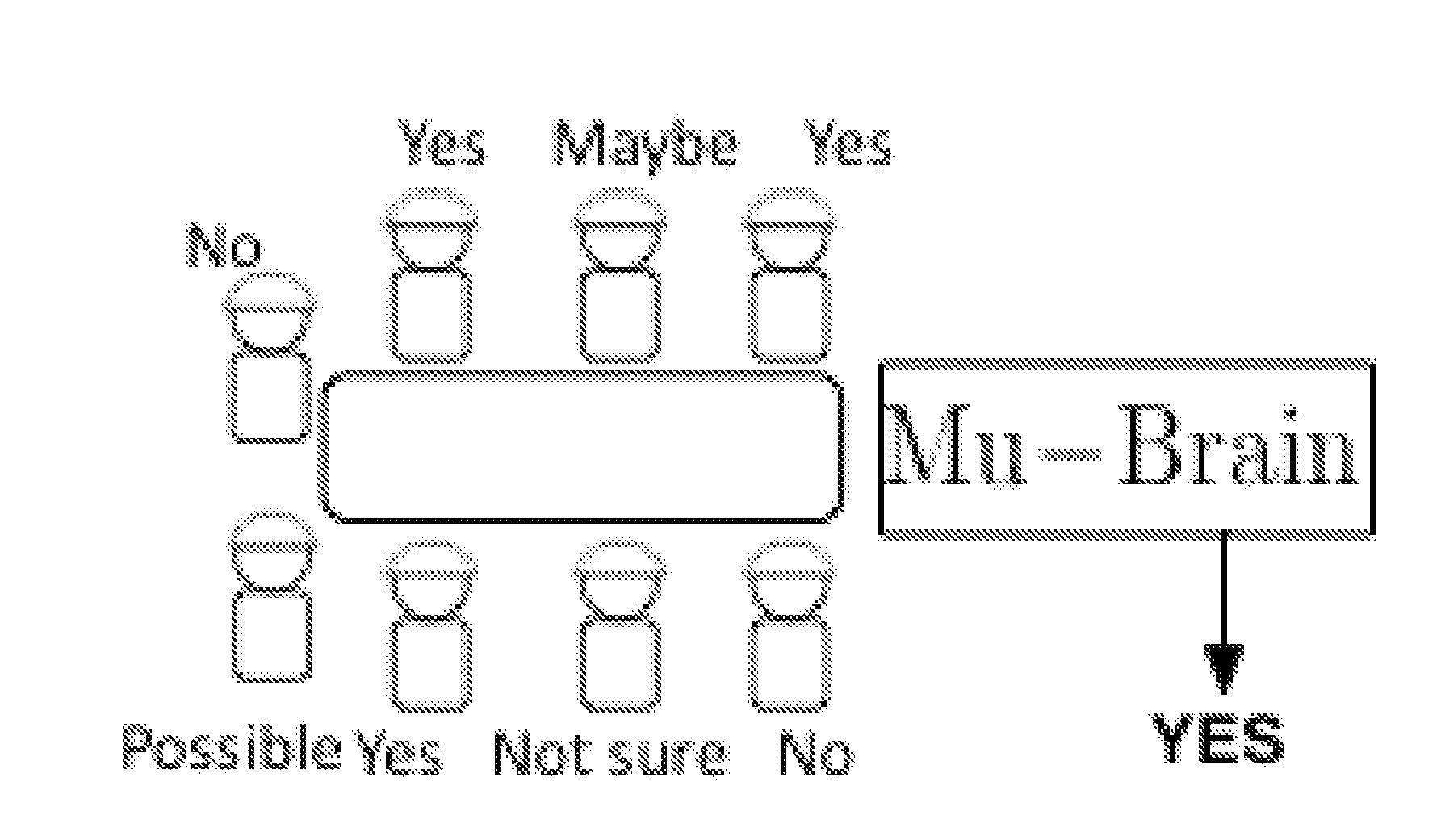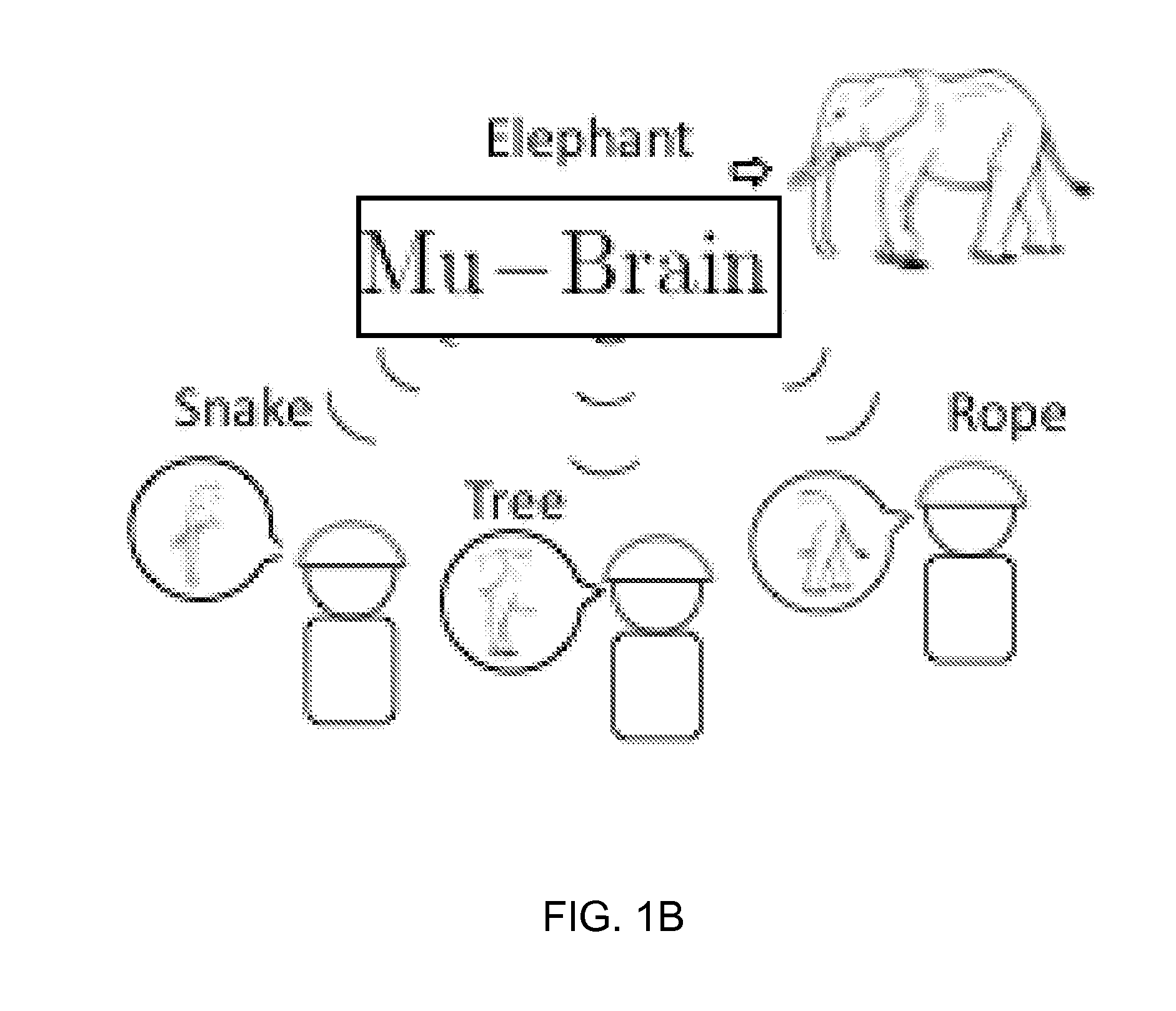Aggregation of bio-signals from multiple individuals to achieve a collective outcome
- Summary
- Abstract
- Description
- Claims
- Application Information
AI Technical Summary
Benefits of technology
Problems solved by technology
Method used
Image
Examples
Embodiment Construction
[0073]In group decision making, automated means to seamlessly and quasi-instantly fuse the intelligence of a group, as well as to fuse human and machine intelligence do not exist.
[0074]Multi-attribute group decision making (MAGDM) is preferable to Yes / No individual voting. In one implementation of MAGDM, a matrix of scores is generated where elements aijl describes the performance of alternative Aj against criterion Ci, and furthermore, users are given weights that moderate their inputs. Instead of contributing with numbers, bio-signals are expected to be used to reflect user's attitude or degree of support toward an alternative or a criterion.
[0075]We now describe a method and an apparatus that automatically aggregates the biological signals from multiple living sources. In the embodiments illustrated, the living sources will often be human individuals in order to generate joint human decision making, or similar collective characteristics, such as, group-characteristic representati...
PUM
 Login to View More
Login to View More Abstract
Description
Claims
Application Information
 Login to View More
Login to View More - R&D Engineer
- R&D Manager
- IP Professional
- Industry Leading Data Capabilities
- Powerful AI technology
- Patent DNA Extraction
Browse by: Latest US Patents, China's latest patents, Technical Efficacy Thesaurus, Application Domain, Technology Topic, Popular Technical Reports.
© 2024 PatSnap. All rights reserved.Legal|Privacy policy|Modern Slavery Act Transparency Statement|Sitemap|About US| Contact US: help@patsnap.com










